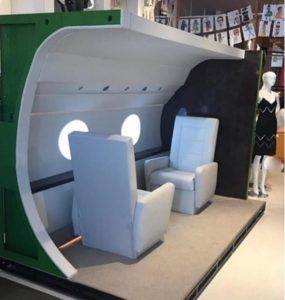
Like many students, I take the 7 train to and from LaGuardia Community College. Each day, I get off at the 33rd Street Station and walk about three blocks west past Van Dam Street to the school’s main entrance on Thomson Avenue. After my classes are finished, I walk back to the station and take the 7 train home. During my walk between the station and the school, I can hear the trains loudly rumbling by on the overhead track every few minutes. In Ways of Hearing Episode 2, the author talks about how there was a massive increase in noise in the city in the 20th century because of automobiles, elevated trains, and construction. The 7 train is a living example of this.
At first, I thought the sound was so loud (the trains are particularly audible in the 2nd floor Library), and tried to block it out by wearing earphones, trying to close off from the world around me like the author says in Ways of Hearing. However as time went on, I realized that the sound of the trains is actually part of the fabric of the city, and by listening to them rumble by, you can actually feel the rhythm of the city. For example, if the train passes by very quickly, I know it is an express train, hurrying to or from Manhattan. If the train passes by slowly, I know it is a local train, preparing to stop at 33rd Street. If I am walking back to the station and I hear a train go by, I know I have about 5 minutes or so until the next train comes. So, instead of closing off my hearing to the sounds around me, I have now learned to embrace the sound of the 7 train as it passes overhead. As the trains pass by, rumbling and screeching against the rails, they are taking people to important activities like work and school, so the train truly represents the lifeblood of the city.





